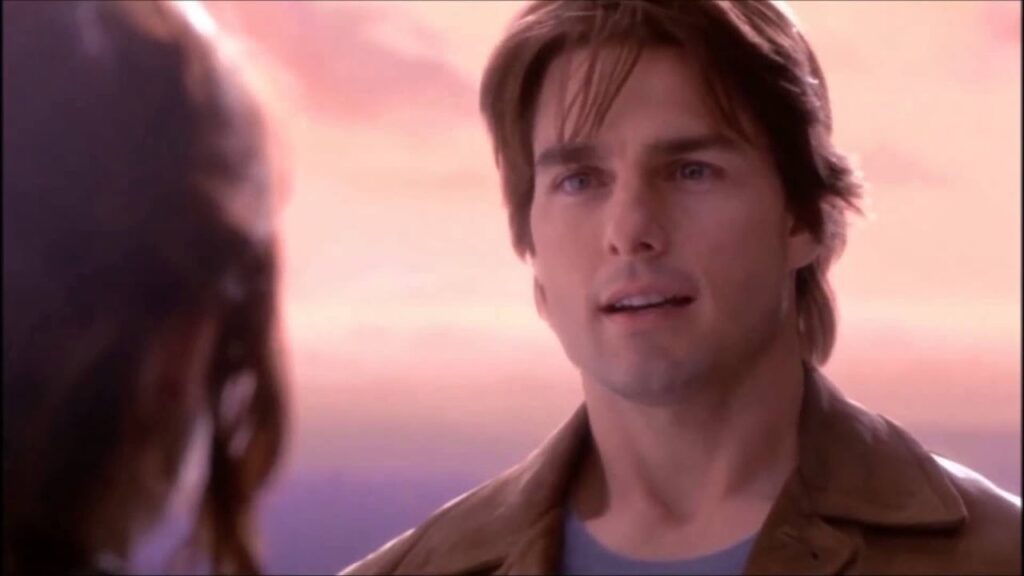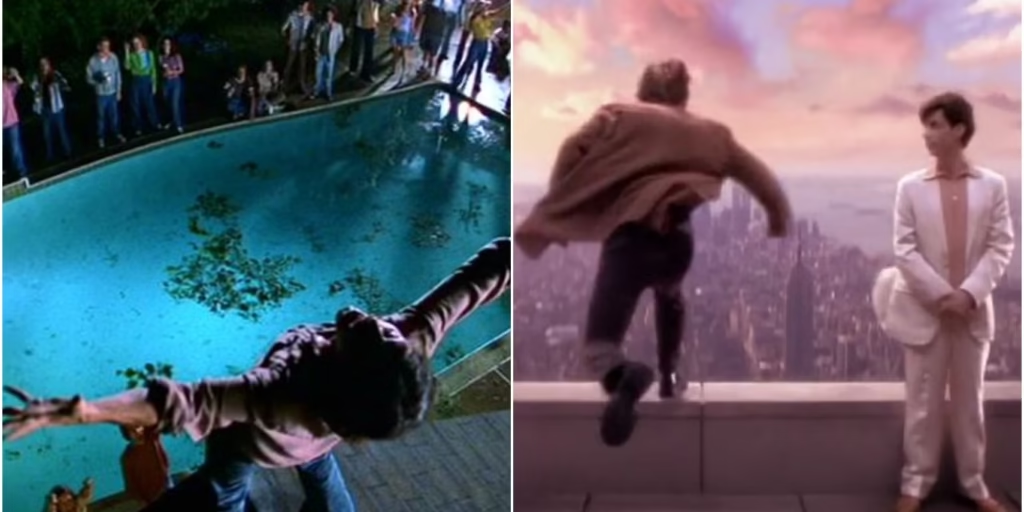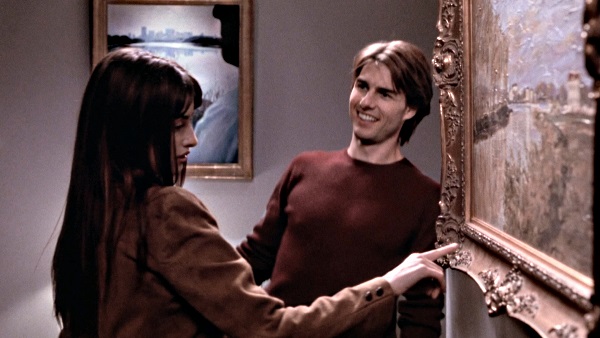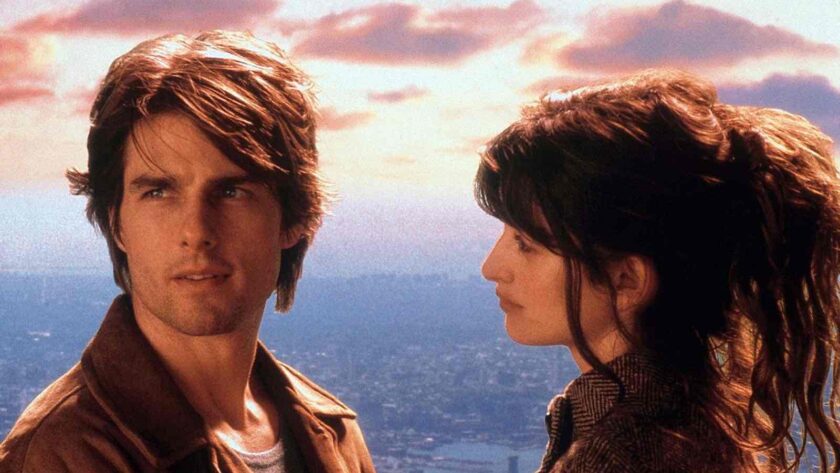A good movie leaves a lasting impression, a great one can make you rethink everything. Vanilla Sky stands out as one of those movies that leaves audiences both puzzled and captivated. Twenty years later, people still examine its mind-bending conclusion. The search term “Vanilla Sky ending explained” remains among the most popular movie-related searches online.
Tom Cruise stars in this psychological thriller that blends reality, dreams, and technology in unexpected ways. The vanilla sky movie plot takes elements from romance, science fiction, and psychological horror. This creates such an intricate puzzle that viewers just need multiple viewings to understand it completely.
This detailed analysis breaks down each significant part of the film’s ending. The dream sequences and life extension technology help viewers understand the complex layers of this story. This piece will light up the hidden meanings and subtle clues throughout the film, whether you’re watching it for the first time or the tenth time.
Contents
- 1 The Basic Plot of Vanilla Sky
- 2 Understanding the Dream Sequence
- 3 The Life Extension Technology
- 4 Breaking Down the Final Scene
- 5 Key Plot Twists Explained
- 6 Timeline of Real Events
- 7 Multiple Ending Interpretations
- 8 The Real World vs Dream World
- 9 Vanilla Sky Ending Explained Frequently Asked Questions
- 9.1 What did the end of Vanilla Sky mean?
- 9.2 What really happened to Sofia in Vanilla Sky?
- 9.3 Who says “Open Your Eyes at the End of Vanilla Sky”?
- 9.4 Was Vanilla Sky all a dream?
- 9.5 What is the moral of the story “Vanilla Sky”?
- 9.6 What is the famous line from Vanilla Sky?
- 9.7 What is the point of the movie Vanilla Sky?
- 9.8 What is the bitter sweet quote in Vanilla Sky?
- 9.9 What does Vanilla Sky mean in slang?
- 9.10 What is the Vanilla Sky alternate ending?
The Basic Plot of Vanilla Sky
Vanilla Sky tells the story of David Aames, a 33-year-old publishing magnate who took over his father’s empire. He lives a relaxed life in Manhattan and treats his big wealth and romantic relationships casually. The core team his father trusted handles the serious business matters.
Key characters and relationships
Three main characters have their lives tangled together in this story:
- David Aames: A wealthy publishing executive who has everything except true self-worth
- Sofia Serrano: A ballet dancer and dental hygienist who stands for innocence and purity
- Julie Gianni: A model who has a complex “friends with benefits” relationship with David
David’s life takes a dramatic turn when his best friend Brian introduces him to Sofia at a party. They connect instantly and spend the night talking deeply at Sofia’s apartment. This seems like the start of a perfect romance.
The car accident and its aftermath
The next morning, David gets a ride from Julie, not knowing she had watched him with Sofia. Everything changes when Julie reveals her deep feelings for David. She says “I swallowed your cum, that means something,” before she drives her car off a bridge. Julie dies in the crash and David ends up badly disfigured.
David’s psychological state
David’s mind starts to break down after the accident. Doctors try but can’t fix his face through plastic surgery at first. He has to wear a prosthetic mask. The physical and mental scars change him from a confident playboy to someone withdrawn and depressed.
His mind gets more confused as strange things start happening. He sees flashbacks of his disfigurement and has weird encounters that make him question what’s real. His mental state becomes so unstable that Dr. Curtis McCabe, a court psychologist, has to watch him while he faces murder charges.
The story mixes David’s memories and experiences into an array of real and imagined moments that blur together. We see everything through his troubled mind, and both David and viewers struggle to separate reality from imagination in this complex story.
Also Read: 10 Fascinating Facts About the Vanilla Sky Cast
Understanding the Dream Sequence
The dream sequences in Vanilla Sky stand out as some of the most intricate storytelling elements in modern cinema. Cameron Crowe crafted these scenes with careful detail that created a continuous connection between reality and fantasy. His work makes viewers question their own perception.
Reality ends and dreams begin
A subtle transition between reality and dreams happens during the morning reunion after the nightclub scene. Crowe reveals this moment as the first lucid dream sequence by showing a ‘Vanilla Sky’. Most viewers might not notice this until they watch the film multiple times. The film’s cinematographer John Toll kept the visual style grounded. He avoided obvious dream markers to keep the line between reality and fantasy blurry.
Clues throughout the film
The narrative contains several visual and thematic elements that signal the dream state. These include subtle changes in how characters behave, imagery that keeps appearing, cinematographic choices that blur reality, and references to classic films and media.
David’s struggle to tell the difference between reality, dreams, and nightmares shapes the film’s style. This uncertainty becomes a central theme that pushes the story forward.
The significance of Times Square
The empty Times Square sequence emerges as one of the most powerful dream indicators in the film. This scene cost $1 million and needed a complete shutdown of one of the world’s busiest tourist spots. New York authorities had never allowed a filmmaker to empty Times Square completely before this.
The production team faced a big challenge. They received just three hours on a Sunday morning to capture all the footage. Tom Cruise’s performance running through deserted streets became a symbol of the film’s exploration of isolation and reality versus illusion.
Times Square’s emptiness serves multiple story purposes. The scene shows David’s deepest fear of being alone. It also hints at the psychological isolation waiting for him. The power lies not just in its technical achievement but in what it represents – a usually crowded center of humanity completely empty. This creates an unsettling dreamscape that sets the mood for the rest of the film.
The blend of technical filmmaking and psychological storytelling appeals deeply to viewers. It makes them question their own reality alongside David. These dream sequences become windows into the protagonist’s mind that reveal his fears, desires, and struggle with identity.

The Life Extension Technology
Life Extension stands as the life-blood of Vanilla Sky’s complex story. The company offers a trailblazing way to preserve human life through cryonic suspension. Their service gives clients a second shot at life with custom dream experiences while they wait for medicine to advance.
How the lucid dreaming works
Life Extension’s technology builds on a complex idea. Clients stay frozen while the system manages to keep their minds active through an intricate lucid dream setup. The company makes a simple promise: “Life, Part 2” – you get to live without aging and your memories of death disappear.
The lucid dream experience has these key features:
- A realistic simulation based on your chosen memories
- Medical experts watch over you
- You know how to change and control the dream world
- Your memories and wishes become part of the experience
The role of Tech Support
Tech Support bridges the gap between dreams and reality. They watch over each client’s experience to make sure everything runs smoothly. David’s dream starts to break down, so Tech Support steps in to explain what’s happening and help fix things. They tell him they’ve solved the original glitch, but he needs to make a big decision about his future.
The 150-year time jump
Life Extension’s technology makes something amazing possible – time travel, in a way. David stays frozen for 150 years. This huge jump in time brings both good and bad news. The future world can fix David’s face injuries. But Tech Support warns that “it’s very different out there now.” Society has changed a lot, and they mention David’s money “won’t last long” in this new world.
This technology changes more than just the body. Today’s cryonics tries to stop death’s effects, but Life Extension suggests a future where your mind stays active during freezing. Some experts guess we might upload minds and create virtual worlds in 50 to 100 years. This makes the movie’s ideas seem more realistic.
The way this technology mixes with human psychology creates something special. David shows us that even perfect dreams can twist because of hidden wants and fears. His lucid dream starts with Monet’s peaceful “vanilla sky” but grows into something much more complex. This shows just how deeply technology and human consciousness connect.
Breaking Down the Final Scene
The climactic finale of Vanilla Sky takes place on a skyscraper’s summit, where reality and illusion merge into one. This powerful sequence weaves together all narrative threads and makes viewers question their assumptions about the story.
The rooftop conversation
Edmund Ventura (Tech Support) takes David to the building’s peak and shares a stunning revelation: David has lived in a lucid dream state for 150 years. The truth comes out about Life Extension’s “Oasis Project” monitoring his thoughts, even during their conversation. Tech Support explains how David built his dream world from meaningful pieces of his youth – everything from album covers to movies that shaped his understanding of love and fatherhood.
David’s choice to wake up
David faces a life-changing decision between two paths:
- Staying in his perfect dream world with Sofia
- Waking up 150 years into the future without financial certainty
David makes a brave choice to wake up, despite his fear of heights. His decision means more than just leaving the dream – it shows he’s ready to accept reality with all its flaws. The moment becomes more touching when Tech Support tells him that Sofia never fully recovered from their short time together in the real world.
The meaning of the last line
The movie’s final scenes hold deep meaning as David takes his leap of faith. A quick montage of almost 100 images flashes before viewers. Director Cameron Crowe called these images “our own Sgt. Pepper cover,” with each image carrying specific significance.
“Relax David, open your eyes” resonates throughout key moments of the film. This phrase marks transitions between different states of consciousness:
- Julie wakes David at the beginning
- Sofia speaks to him after the street awakening
- The final moment of awakening
Beginning and ending with the same line creates a circular story structure that suggests both an end and a fresh start. Crowe later shared that Tech Support’s explanations weren’t entirely trustworthy, adding more depth to the ending’s possible meanings.
David’s final choice to wake up, even with an uncertain future ahead, shows his transformation from someone living in artificial perfection to a person ready to face life’s realities. His choice reflects his earlier words: “I want to live a real life… I don’t want to dream any longer“.

Key Plot Twists Explained
Vanilla Sky stands out as a masterpiece of psychological storytelling, with three plot twists that reshape our understanding of the film’s complex narrative.
The Sofia/Julie switch
The most unsettling twist happens when Sofia suddenly changes into Julie during intimate moments. This change isn’t just a technical error but comes from David’s deep guilt about how he treated Julie. The switch occurs because David’s subconscious couldn’t process what happened with Julie and how it affected his chances with Sofia.
The truth about Sofia and Julie’s relationship reveals:
- Sofia and David never met again after their first night together in reality
- Life Extension created the “better life” with Sofia
- Sofia “never fully recovered” from their brief encounter in the real world
Dr. McCabe’s true nature
We learn that Dr. McCabe isn’t really a prison psychiatrist helping David understand his crimes – he’s another part of the lucid dream. His role goes deeper – he represents David’s subconscious trying to make sense of his broken reality. The sessions with McCabe aren’t actual therapy but David’s mind working through his guilt and confusion.
Reality vs Dream Elements in Dr. McCabe’s Role:
| Reality | Dream State |
|---|---|
| No prison | Constructed prison setting |
| No murder trial | Imagined legal proceedings |
| No therapy sessions | Extended psychological exploration |
The significance of the mask
David’s mask means more than just hiding his disfigurement. Film analysts see it as a “liminal personae” – something that strips away his identity and status until he can rebuild himself.
The mask works on multiple levels. It shows David’s inability to face reality in his dream state. In real life, it represents the facade he managed to keep up as a wealthy publishing heir.
Tech Support calls this complex mix of revelations “a revolution of the mind”. The lucid dream that should have been perfect becomes corrupted by David’s own subconscious. This forces him to face the truth about his relationships, identity, and choices. These twists aren’t just plot devices – they help us understand how Vanilla Sky explores themes of reality, identity, and redemption.
Timeline of Real Events
Peeling back the layers of illusion in Vanilla Sky shows a stark reality that’s different from David’s dream-state memories. The true sequence of events helps us decode the film’s complex story and its deep exploration of love, loss, and redemption.
What actually happened to David
David woke up alone on the street the morning after that fateful nightclub incident. He was hungover and abandoned – nothing like the romantic reconciliation his mind made up later. His life took a dark turn as he isolated himself, and his real-life struggles began:
| Timeline | Events |
|---|---|
| Post-Nightclub | Woke up alone, never saw Sofia again |
| Following Months | Battled board for company control |
| Late December | Committed suicide via overdose |
David fought a fierce corporate battle with the “Seven Dwarfs” – his board of directors. His father’s loyal friend, Thomas Tipp, helped him keep control of the company. The professional win couldn’t make up for what he’d lost in his personal life.
The truth about Sofia
David and Sofia’s real relationship was much shorter but more meaningful than his dream version suggests. They spent just one night together, but that night struck a chord with both of them. Tech Support reveals some touching truths about Sofia:
- She “never fully recovered” from their brief encounter
- She knew David better than anyone else
- She kept the memory of their one night when true love seemed possible
Sofia showed up briefly at Brian’s memorial service. She noticed two music tracks playing at once – a detail from their single night that David had mentioned. This small detail shows how deep their connection was, even though it was short-lived.
Brian’s memorial service
Brian Shelby proved himself a true friend until the end and hosted a three-day memorial service at David’s former home. The event celebrated David’s life and showed the relationships he left behind. Sofia was touched when she heard the overlapping music tracks at the memorial.
The real events paint a sadder picture than David’s lucid dream. After his accident, he lived in isolation and couldn’t handle his physical and emotional pain. His headaches became almost unbearable, and he struggled with daily life. The suffering led him to choose Life Extension’s services – a tech escape from a reality he couldn’t face anymore.
Tech Support’s revelations about these real events show how David’s subconscious changed and idealized his memories during the lucid dream state. The truth about Sofia proves that even a brief encounter can leave a lasting mark on someone’s soul – a theme that runs through the whole story of Vanilla Sky.
Multiple Ending Interpretations
Vanilla Sky remains one of the most debated films, and its true meaning continues to spark discussions. Director Cameron Crowe acknowledges that viewers can interpret the film’s ending in several valid ways. This storytelling approach makes people analyze and debate the movie endlessly.
The five possible explanations
The movie gives us five different ways to understand its ending. Each interpretation has supporting evidence throughout the story:
- The Tech Support Truth: Everything Tech Support explains is accurate – David spent 150 years in lucid dreaming after choosing euthanasia.
- The Complete Dream: The whole movie plays out as a dream sequence. David’s car registration shows an impossible date – February 30th.
- The Post-Crash Dream: David’s comatose mind creates everything that happens after the car accident.
- Brian’s Novel: Brian Shelby’s book manuscript tells the whole story, which explains why David’s downfall gets such detailed attention.
- The Medical Hallucination: Drug-induced visions during David’s reconstructive surgery create all post-crash events.
Director’s intended meaning
Cameron Crowe takes an interesting position on how to interpret the film. He reveals that viewers shouldn’t trust everything Tech Support explains. Brian Shelby’s character is vital to understanding the story. Crowe says “If I stay with Jason Lee in the Rubik’s Cube of Vanilla Sky, I always go to the best places“.
Over the last several years, Crowe’s own understanding has changed: “Sometimes I watch it, and I have a completely different take on what the story is, where the splice comes, and what it’s all about“. This shifting view adds more depth to how we analyze the film.
Fan theories and debates
The movie’s unclear nature has led fans to create many theories beyond the five main interpretations. People debate these main points:
- The Reality Markers: Fans inspect visual cues and character behaviors to separate real from dream sequences
- Tech Support’s Role: People question if David’s subconscious corrupted Tech Support
- Sofia’s True Story: Questions arise about Sofia’s feelings for David – real or just another dream
David and Sofia act out scenes from classic films and album covers, creating a dreamscape filled with media references. This mix of pop culture and personal story makes viewers wonder where reality stops and cultural influence begins.
Some fans point to specific hints that support their views, like the impossible February 30th date on David’s car registration. Others see the film as a study of identity and reality rather than a simple story.
New interpretations emerge as viewers find more layers of meaning. The whole ordeal shows how rich and complex the film is. Multiple valid interpretations can exist at once, making this a unique piece of cinema that defies simple explanation.

The Real World vs Dream World
Viewers must pay close attention to intricate details to distinguish between reality and dreams in Vanilla Sky. Director Cameron Crowe and cinematographer John Toll created a visual language that makes viewers question their perception of events.
Visual cues and differences
The film tells its story through subtle yet vital markers to distinguish between reality and dreams. Toll stayed away from obvious dream indicators. He kept a grounded cinematographic style to maintain the narrative’s ambiguity. The visual elements include:
- The “vanilla sky” appears in morning scenes
- Empty urban spaces, especially Times Square
- Subtle lighting shifts between sequences
- References to classic films and album covers
- Impossible architectural configurations
Times Square sequence stands as the film’s most striking visual achievement. The production team got an unprecedented three-hour window to capture the completely empty location. This scene works both as a technical marvel and a powerful metaphor for David’s psychological isolation.
Character behavior changes
Subtle changes in character behavior reveal the transition between reality and dreams. Characters show idealized versions of themselves in dream sequences, especially in their interactions with David. Sofia’s character serves as a notable example. Her behavior in the dream world shows unconditional love, which contrasts with their brief, complex real-life relationship.
Real World vs Dream World Character Behaviors:
| Character | Real World | Dream World |
|---|---|---|
| Sofia | Brief connection | Unconditional devotion |
| Julie | Tragic ending | Shape-shifting presence |
| Dr. McCabe | Non-existent | Supportive therapist |
| Tech Support | Monitoring presence | Dream guide |
Reality markers throughout
Specific markers help viewers identify the boundary between reality and fantasy. These indicators become clearer as David’s lucid dream starts to break down. The vital reality markers include:
Crowe uses what he calls “the splice” – the moment reality ends and the lucid dream begins. This transition happens subtly. Overlapping music tracks and other audio cues suggest a shift in consciousness.
Tech Support reveals that David’s dream world came from elements of his youth. Album covers and movies shaped his ideals. These cultural touchstones built his artificial reality. The world feels authentic yet remains subtly artificial.
Impossible details provide concrete evidence of the dream state. The February 30th date on David’s car registration stands out. These inconsistencies and the recurring vanilla sky image create a complex web of reality markers. Careful viewers will spot these details.
Toll’s cinematography plays a vital role in keeping the film’s ambiguous nature. He explained, “I didn’t do anything that was overtly obvious, because the story revolves around the main character not knowing whether he’s in a state of reality, a dream or a nightmare, so we want it to feel a little ambiguous“. This approach to visual storytelling lets viewers share David’s uncertainty about his reality.
The film explores reality versus dreams beyond visual trickery. It asks deeper questions about consciousness and perception reliability. David’s subconscious starts to reject his dream world’s artificial perfection. Reality markers become more noticeable and lead to his carefully constructed fantasy’s breakdown.
Vanilla Sky Ending Explained Frequently Asked Questions
What did the end of Vanilla Sky mean?
The end of Vanilla Sky is ambiguous and open to interpretation, leaving viewers to question the nature of reality and the power of dreams. In the film’s final scenes, Tom Cruise’s character, David, decides to “open his eyes” after undergoing an experimental procedure to wake him from a dream-like state. The ending suggests that David has chosen to embrace life, even with its imperfections, after realizing the importance of living authentically.
What really happened to Sofia in Vanilla Sky?
In Vanilla Sky, Sofia, played by Penélope Cruz, is initially presented as David’s true love. However, the plot reveals that she is part of David’s dream world in the context of the “life-extension” experiment. While her presence feels genuine in the dream, her fate is tragic as she is ultimately not real, but a projection within the simulated reality David is experiencing.
Who says “Open Your Eyes at the End of Vanilla Sky”?
The phrase “Open your eyes” is said by Dr. Curtis McCabe, played by Jason Lee, at the end of Vanilla Sky. This line marks a pivotal moment in the film where David is confronted with the choice to awaken from his artificial dream and face the real world. It serves as a call to David to leave behind the illusion and embrace reality.
Was Vanilla Sky all a dream?
Vanilla Sky blurs the lines between dream and reality, leaving the audience to question whether everything that happened was a dream. In the context of the plot, David undergoes a “life-extension” procedure that allows him to live in a constructed dream world after a tragic accident. By the end of the movie, it’s unclear whether the events are part of a dream or if David has truly awakened to reality, making the story open to interpretation.
What is the moral of the story “Vanilla Sky”?
The moral of Vanilla Sky revolves around the themes of self-awareness, the pursuit of true happiness, and the consequences of escaping from reality. The film suggests that while it may be tempting to live in a perfect, idealized world, true fulfillment comes from embracing the messiness of life, accepting imperfection, and living authentically. It encourages the idea that facing reality, with all its pain and beauty, is preferable to living in an artificial paradise.
What is the famous line from Vanilla Sky?
One of the most famous lines from Vanilla Sky is “The sweet is never as sweet without the sour.” This line reflects the film’s exploration of life’s dualities—pleasure and pain, love and loss—and suggests that the good in life is more meaningful because of the challenges we face. It underscores the importance of embracing all aspects of life.
What is the point of the movie Vanilla Sky?
The point of Vanilla Sky is to explore the boundaries between reality and fantasy, and the consequences of choosing one over the other. Through David’s journey, the film delves into themes of identity, love, regret, and the human desire to escape from pain. It challenges the notion of perfection, showing that real happiness comes from facing the truth and embracing life in all its complexities.
What is the bitter sweet quote in Vanilla Sky?
A bittersweet quote from Vanilla Sky is: “I wake up every day and I think, how did I get so lucky? And the answer is, I don’t know. But I’ll never forget it.” This line encapsulates the tragic irony of David’s journey—he is blessed with love and success, yet his life is marred by deep personal conflict and the realization that these blessings might not be real.
What does Vanilla Sky mean in slang?
In slang, “Vanilla Sky” can refer to an idealized or perfect version of something, often one that is unattainable or unrealistic. The phrase evokes the concept of a picturesque, dream-like reality, similar to how David’s life is depicted in the film—a beautiful illusion, but ultimately empty. It suggests a longing for perfection or escape from the complexities of real life.
What is the Vanilla Sky alternate ending?
The alternate ending of Vanilla Sky shows a slightly different version of David’s decision to wake up from the simulated reality. In this ending, David’s interactions with Sofia and the characters are more drawn out, and there is an even greater emphasis on his struggle to accept the real world. While the core themes remain the same, the alternate ending provides additional closure to David’s emotional journey, though it still leaves much to the viewer’s interpretation.




